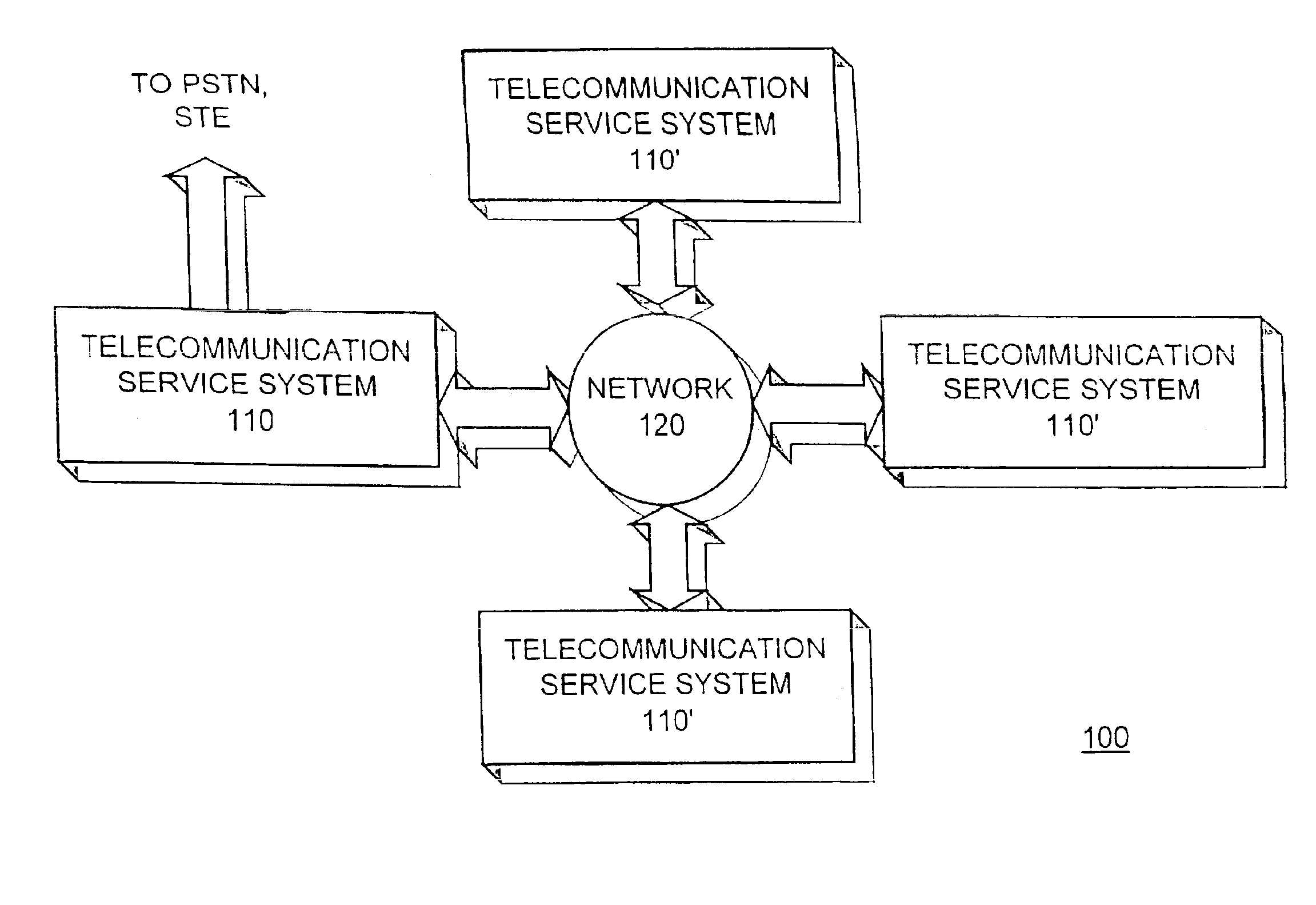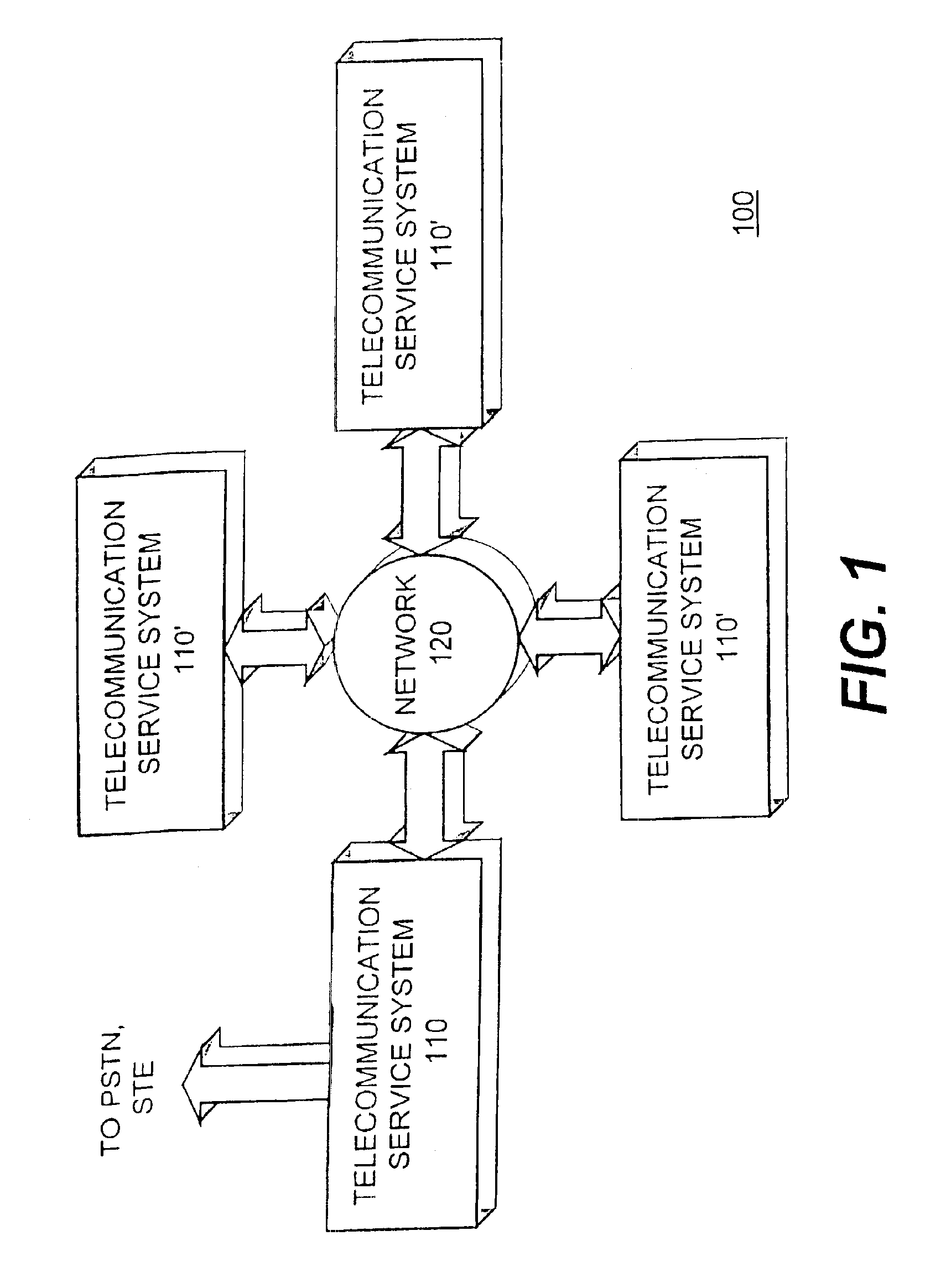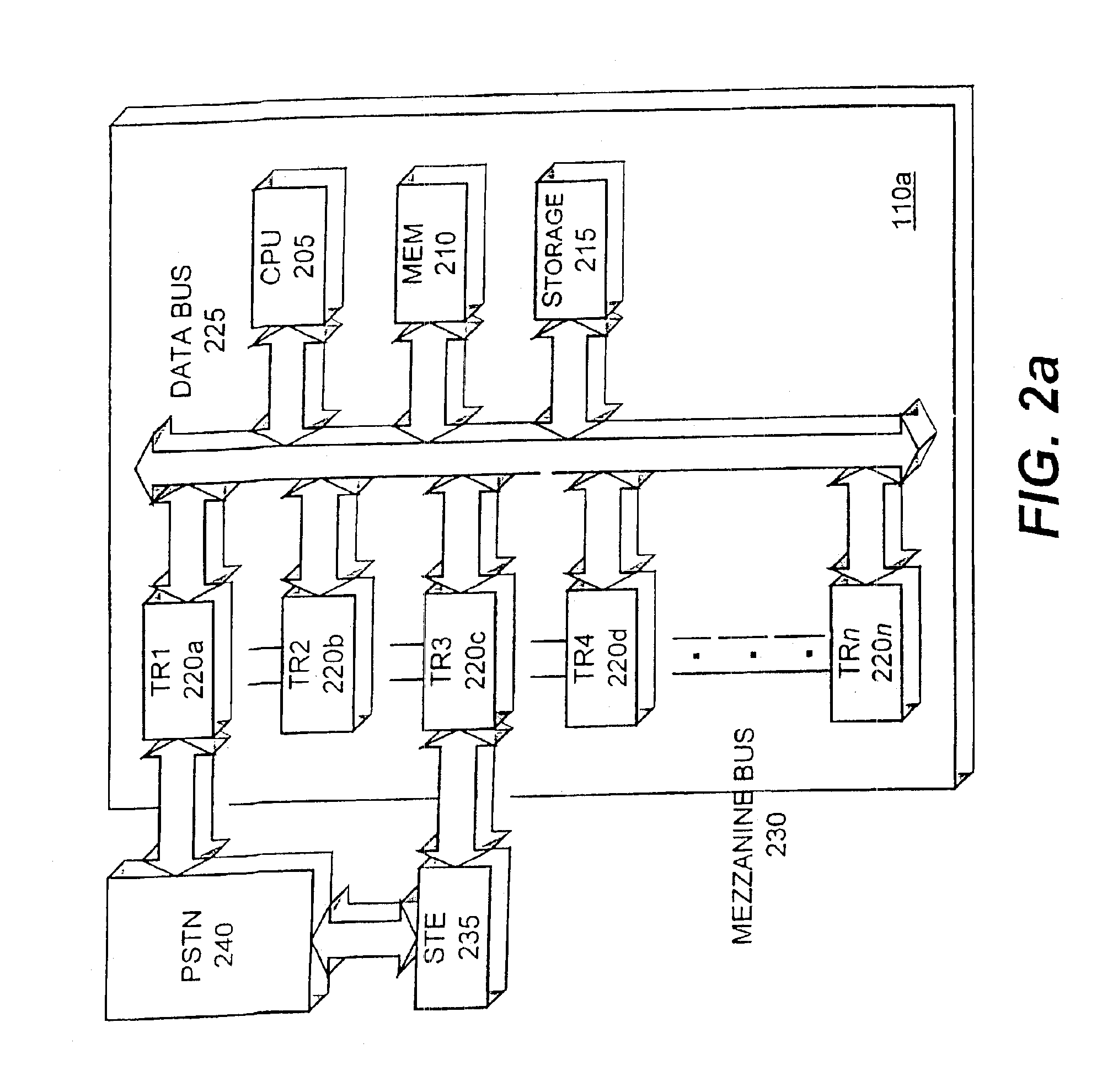Telecommunication resource allocation system and method
a technology of telecommunication resource allocation and allocation system, applied in the field of telecommunication system, can solve the problems of reducing complexity, troublesome, and large number of operations along each path, so as to reduce system costs, increase overall system utilization and efficiency, and reduce the effect of application development costs
- Summary
- Abstract
- Description
- Claims
- Application Information
AI Technical Summary
Benefits of technology
Problems solved by technology
Method used
Image
Examples
second embodiment
[0055]FIG. 2a is a block diagram illustrating the telecommunication service system 110a in accordance with the present invention. The telecommunication service system 110a includes a central processing unit (“CPU”) 205, a memory 210, a storage device 215, one or more telecommunication (including computer telephony) resources 220a-220n (generally 220), a data bus 225, and a mezzanine bus 230. The central processing unit 205, the memory 210, the storage device 215, and each of the telecommunication resources 220a-220n are coupled through the data bus 225. Further, each of the telecommunication resources 220a-220n are coupled to each other through the mezzanine bus 230.
[0056]The telecommunication service system 110a is coupled to one or more standard telecommunication equipment devices or systems (“STE”) 235. Specifically, each STE device 235 may be coupled to a telecommunication resource, e.g., 220c. The STE device 235 is coupled to a public switched telephone network (“PSTN”) 240.
[00...
PUM
 Login to View More
Login to View More Abstract
Description
Claims
Application Information
 Login to View More
Login to View More - R&D
- Intellectual Property
- Life Sciences
- Materials
- Tech Scout
- Unparalleled Data Quality
- Higher Quality Content
- 60% Fewer Hallucinations
Browse by: Latest US Patents, China's latest patents, Technical Efficacy Thesaurus, Application Domain, Technology Topic, Popular Technical Reports.
© 2025 PatSnap. All rights reserved.Legal|Privacy policy|Modern Slavery Act Transparency Statement|Sitemap|About US| Contact US: help@patsnap.com



